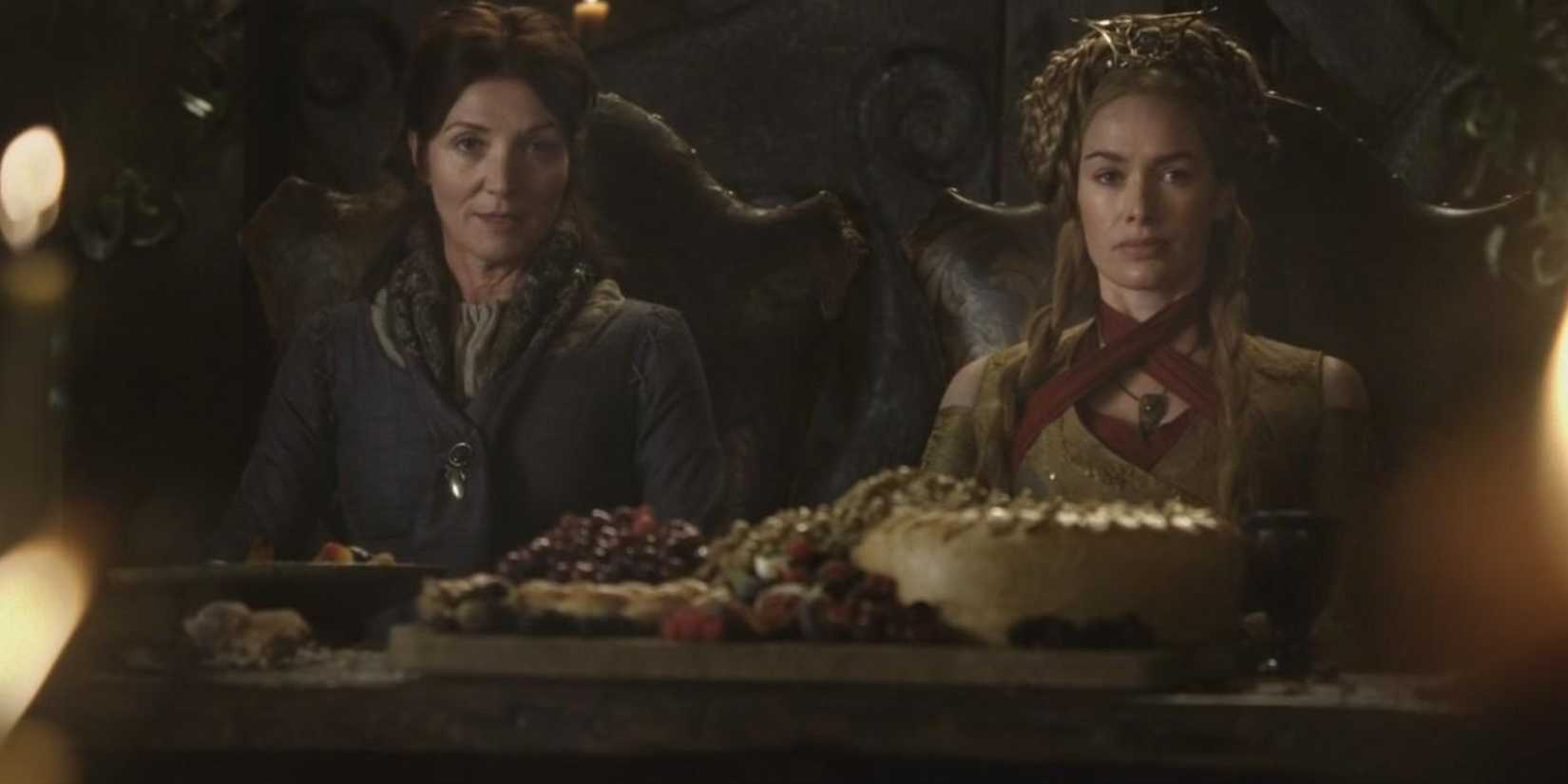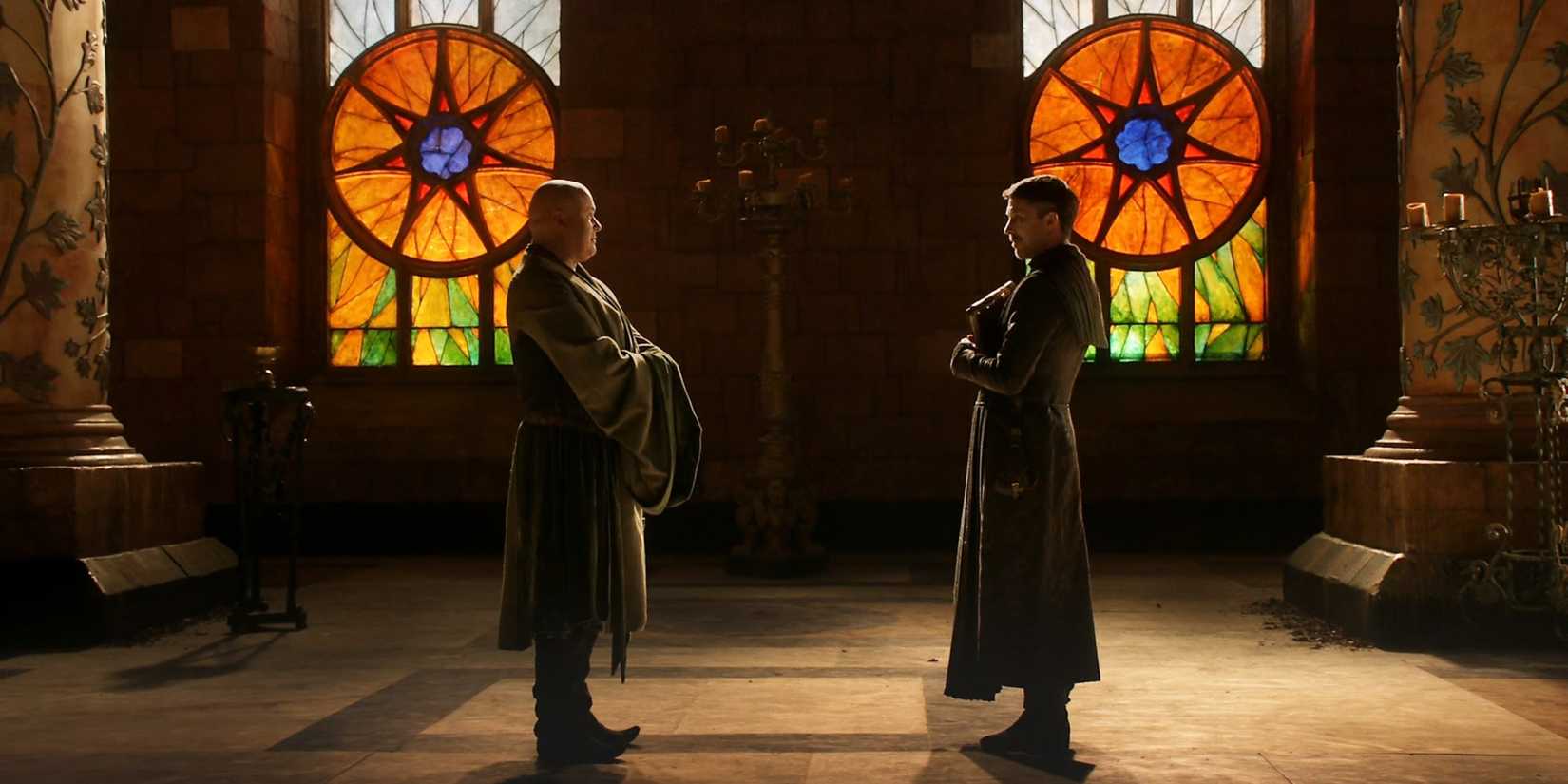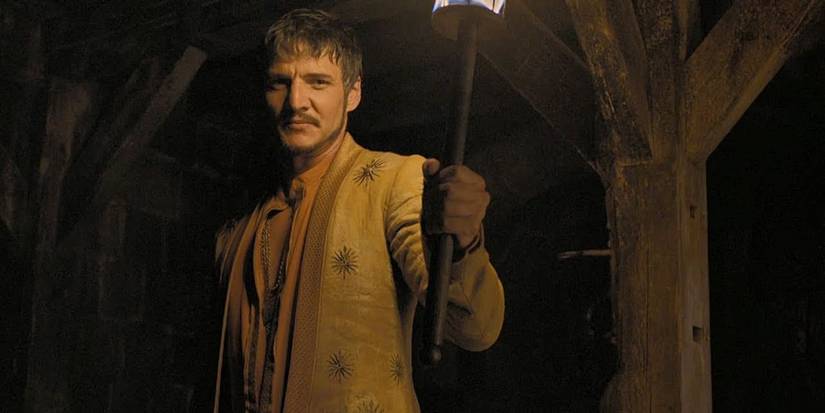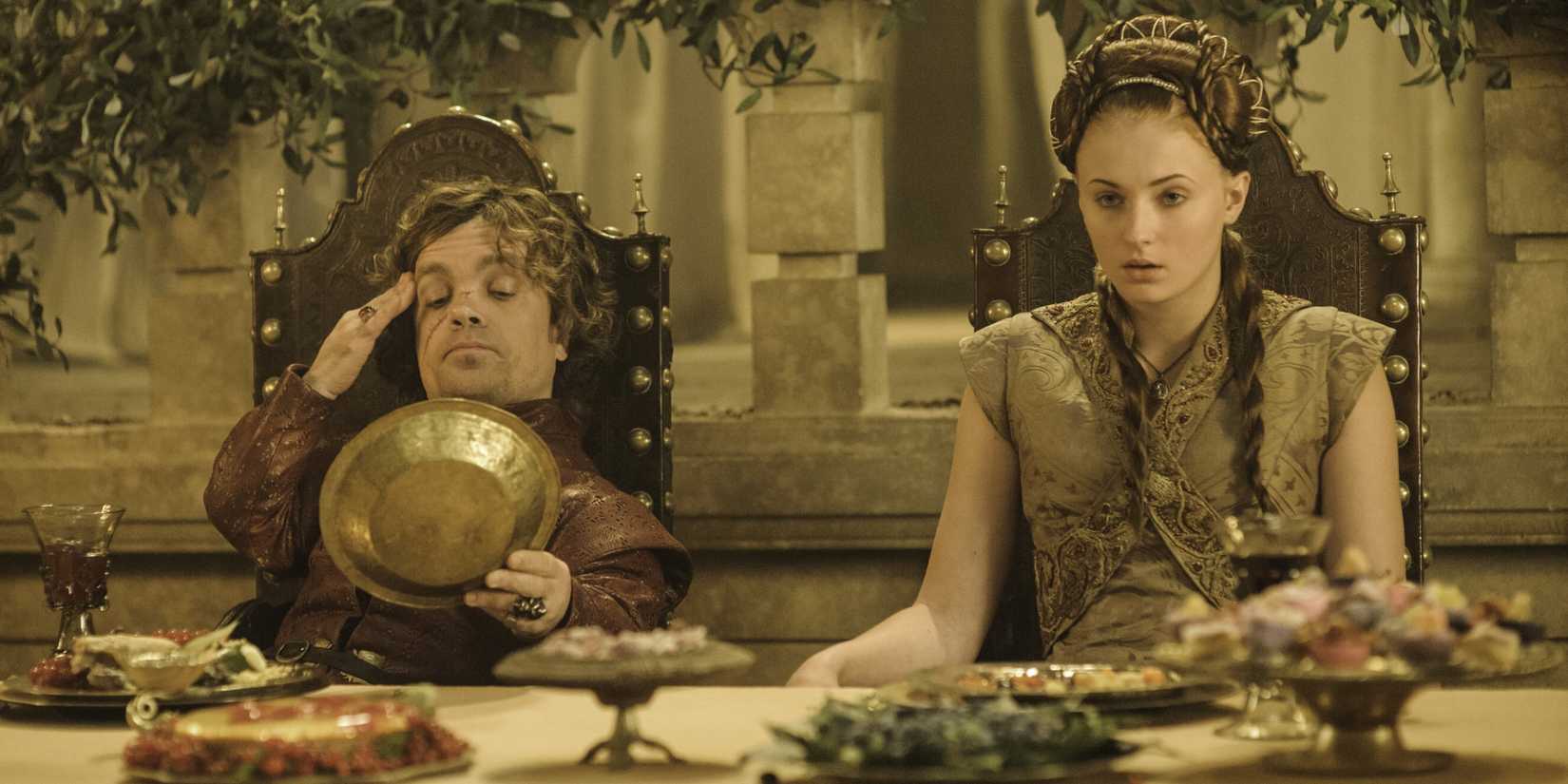
Everyone knows HBO’s Game of Thrones differed quite a bit from George R.R. Martin’s A Song of Ice and Fire books. The show changed important plot points, characters, and even created an ending that hasn’t happened in the books yet. It altered the source material more dramatically than most TV adaptations of popular fantasy series.
Although some book fans disliked the changes, the show Game of Thrones didn’t always suffer from them. In fact, several altered or newly created scenes actually improved upon the original novels, giving characters more believable reasons for their actions, greater emotional depth, and a more impactful visual presence. These scenes, ranging from intimate talks to large-scale battles, were simply more effective on screen.
Cersei Tells Catelyn Stark About Her Stillborn Son
Cersei’s Confession To Catelyn Turns Her Into A Tragic Villain

A particularly memorable emotional scene from Game of Thrones happens early in the first season, in the episode “The Kingsroad.” Cersei Lannister (Lena Headey) shares a deeply sad story with Catelyn Stark (Michelle Fairley) about the loss of her baby. This moment shows a rare, vulnerable side of the usually calculating queen, making her feel more human than the books portray.
In George R.R. Martin’s A Song of Ice and Fire series, Cersei Lannister tells Eddard Stark she used a potion from Grand Maester Pycelle to terminate a pregnancy, preventing Robert Baratheon from having his child. She admits her only reason was that the child was his, revealing a cruel and spiteful side to her character and highlighting her lack of compassion.
The show reimagines her as a mother deeply affected by loss, which makes her future actions understandable, even if tragic. This approach strongly echoes Cersei’s fierce determination to protect her children at any cost, as seen in Game of Thrones. By portraying Cersei’s harshness as a result of grief instead of simple evil, the show created a more complex and captivating villain.
Varys And Littlefinger’s Scenes
Varys And Littlefinger’s Rivalry Becomes A Battle Of Philosophies In The Show

In the Game of Thrones books, Varys and Petyr Baelish—known as Littlefinger—both work from the shadows to influence events in King’s Landing, but they mostly avoid direct conflict. The TV show, though, turns their rivalry into a captivating and intense relationship.
The scenes between these characters in Game of Thrones are full of intense, clever back-and-forth. They’re both brilliant strategists, constantly challenging each other with witty remarks and knowing glances. Conversations like their famous exchange about “chaos is a ladder” highlight their fundamental disagreement: one believes in maintaining order, while the other embraces ambition and change.
When Game of Thrones finally revealed the secret plots and schemes, it created some of the show’s most memorable and intense scenes. This highlighted how well the show understood the conflict between different viewpoints, something the A Song of Ice and Fire books could have explored more by having these opposing sides clash directly.
Arya Being Tywin’s Cupbearer
Arya And Tywin’s Conversations Add Emotional Depth And Danger

In the TV series Game of Thrones, Arya Stark’s role as a cupbearer to Tywin Lannister was important for the development of both characters, but this never occurs in the original books. In the books, Arya is hidden at Harrenhal and controlled by Roose Bolton. The show’s change is clever, bringing together two of the most intelligent characters in Westeros for surprising and insightful conversations.
The interactions between Tywin and Arya in Game of Thrones show us a more human side of Tywin, while also highlighting Arya’s developing cleverness. Though he remains a ruthless character, Tywin’s reluctant respect for Arya’s intelligence and bravery makes him seem a little less harsh. At the same time, Arya’s constant danger – facing the man who destroyed her family – proves just how strong she is.
This change made both characters more complex, building a dynamic of tension and mutual respect that isn’t present in the original books. It’s a clever adaptation that adds depth to the characters instead of making them simpler.
Theon Greyjoy’s Torture
Theon’s Suffering Gives His Downfall Real Psychological Weight

Theon Greyjoy’s journey in Game of Thrones, from a proud and confident captive to a completely shattered person, is one of the show’s most powerful and heartbreaking achievements. Although his suffering is also shown in the books, the series portrays it with a deeply personal and devastating intensity, making him a truly tragic character.
Watching Theon Greyjoy (Iwan Rheon) suffer under Ramsay Bolton is incredibly painful, but it’s a crucial part of the story. It explains his internal struggles and transformation into “Reek,” and it fully reveals Ramsay’s cruel and manipulative nature. Alfie Allen’s acting makes the horrifying scenes feel disturbingly real.
In the show, Theon’s struggles take center stage, becoming a key part of exploring themes of identity and finding forgiveness. Unlike the books where his story feels secondary, the show’s harsher portrayal of his experiences actually enhances the narrative, making it a significant and positive change HBO made.
Tywin And Oberyn Talking About Elia
A Single Conversation Gives Both Men More Power

One of the strongest moments in Game of Thrones happens when the show focuses on compelling characters interacting, and the scene between Tywin Lannister and Oberyn Martell (Pedro Pascal) is a prime example. Their subtle but intense conversation about the death of Elia Martell wasn’t part of the original books, but it felt completely natural and believable.
The conversation is filled with hidden political meanings. Tywin’s logical approach when talking to Oberyn highlights his practical nature, and Oberyn’s controlled anger shows how dangerous he can be. This scene also offers a different side of Oberyn, revealing him as a man driven by sorrow and strong beliefs, rather than just pleasure.
This scene highlights how the show developed Oberyn’s character beyond the books. While already a striking figure in the source material, the TV series gave him a captivating presence and charm that lived up to his reputation. Though many of Oberyn’s scenes in Game of Thrones were better than their book counterparts, this moment from season 4’s “Two Swords” perfectly illustrates how the show truly brought his character to life.
The Red Wedding
Cold Finality Makes The Red Wedding Unforgettable
 ©HBO / Courtesy MovieStillsDB
©HBO / Courtesy MovieStillsDB
The Red Wedding is considered one of the most shocking moments in Game of Thrones, even amongst a series known for its surprises. Though it originated in George R.R. Martin’s book A Storm of Swords, the television adaptation made the scene even more horrifying with its intense visuals and powerful emotional impact.
The massacre in the books is portrayed as a messy, shocking fight. However, the TV adaptation of the Red Wedding is much more suspenseful and impactful. The haunting music, sudden quiet, and swift betrayal create unbearable tension. The deaths of Robb and Catelyn Stark feel truly definitive and devastating, rather than simply sad.
The show also made a powerful choice by letting Catelyn Stark stay dead, unlike the books where she returns as Lady Stoneheart. This kept the emotional weight of her death strong. There was no comeback, just a permanent loss, and that harsh realism is a big reason why Game of Thrones was so memorable.
The Battle Of Hardhome
One Of The Most Iconic Battles Is Exclusive To The Show

The Battle of Hardhome was created specifically for the TV series Game of Thrones, and it quickly became one of the show’s most memorable moments. Though it doesn’t happen in the books, it’s crucial for understanding the gravity of the war against the White Walkers.
The attack on the wildling village powerfully demonstrates Jon Snow’s leadership skills and the overwhelming power of the White Walkers. The scene of the Night King resurrecting the dead is incredibly frightening, but also a stunning visual achievement.
The show powerfully brought to life the danger present in the original novels, making the stakes feel incredibly real for viewers. It wasn’t just a retelling of the story; in fact, considering how important this scene was, it’s surprising it wasn’t taken directly from the books.
Any Scene Where Tyrion Makes A Joke
Tyrion’s Humor Makes Him More Empathetic And Alive

Tyrion Lannister, played by Peter Dinklage in Game of Thrones, is arguably a stronger character on screen than in the A Song of Ice and Fire books. While he’s clever in both versions, the books portray his wit as more harsh and unkind, and his intelligence tends to keep him distant from others.
Despite everything he goes through, the show portrays Tyrion’s humor as both a defense mechanism and a way to connect with others, which is why he’s such a popular character. His memorable jokes – whether about wine or his own bad luck – make him relatable and human. Peter Dinklage delivers these lines with a warmth that even makes his sarcasm feel genuine, showing how Tyrion uses humor to cope with a hostile world.
Tyrion Lannister became more likable in Game of Thrones by maintaining his sharp wit while appearing more approachable. A subtle shift—changing his laughter from dismissive to defiant—helped establish him as the emotional center of the series.
Read More
- Percy Jackson Season 2’s Tyson Explained: Everything You Need To Know About The Cyclops Character
- Прогноз нефти
- Золото прогноз
- Доллар обгонит рубль? Эксперты раскрыли неожиданный сценарий
- Eleven’s Kryptonite In Stranger Things Explained
- Прогноз криптовалюты BNB: прогнозы цены BNB
- Прогноз криптовалюты IP: прогнозы цены IP
- I Spotted A Few Travis Kelce-Related Easter Eggs In Taylor Swift’s Life Of A Showgirl Release Party, And I Need To Talk About Them
- Black Phone 2 Overtakes Halloween Ends On Blumhouse’s Highest-Grossing Horror Movies
- Brendan Fraser Reflects on Missing Out on Playing Superman in J.J. Abrams’ Canceled ‘Superman: Flyby’
2025-11-06 04:41